Expanding the Human Environment
Today, we expand the notion of environment. The University of Houston presents this series about the machines that make our civilization run, and the people whose ingenuity created them.
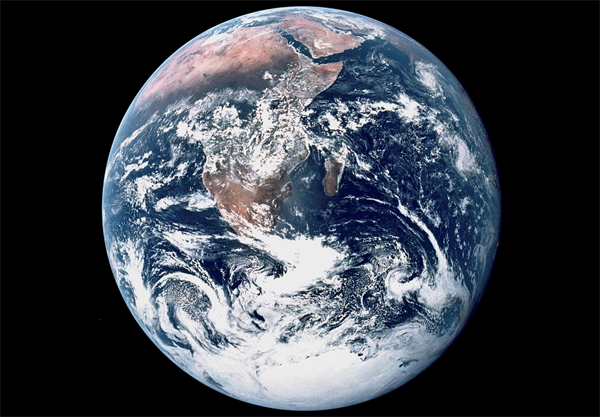
There are few images more beautiful and more humbling than that of our home planet, clearly seen as an isolated jewel in space.
The 60's and 70's were pivotal decades in our understanding of the human environment. Signature events included the publication of Rachel Carson's Silent Springin 1962 and Only One Earth in 1972 by Barbara Ward and Ren' Dubos, and of course the institution of Earth Day in 1970. These highlighted the impact we as an occupying force were having on our lands and seas. They fostered a more thorough understanding of the human habitat and encouraged careful use of its resources. We could no longer regard our local regions as our environments; all are connected. The resulting concept of the whole earth as our home has been a healthy one.
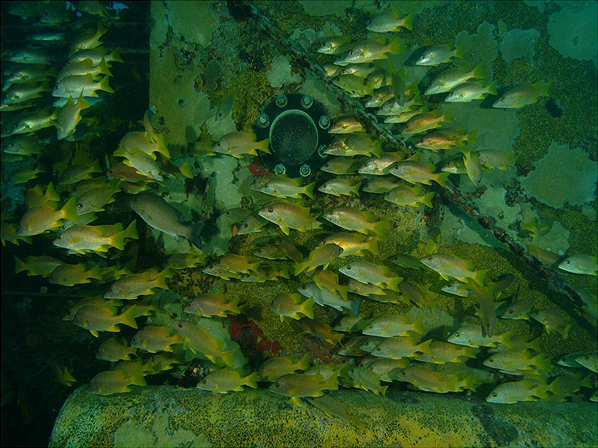
Shoal of fish near the Aquarius habitat off Key Largo, Florida. The oceans and their abundant life are a sensitive barometer to many global environmental perturbations.
But let's step back a bit. The Merriam Webster dictionary gives a definition of environment as 'the complex of physical, chemical, and biotic factors '. that act upon an organism or an ecological community and ultimately determine its form and survival.' With this in mind, one must also consider off-world phenomena that directly influence life on earth. We travel in a privileged orbit — it's just the right solar distance to maintain a temperature range comfortable to life. Lunar and solar gravity directly influence the tidal action of our oceans. The earth is constantly bathed in high energy radiation from the sun and cosmic sources, but earth's magnetic fields and atmosphere effectively shelter our surface. They provide a protective bunker for life to flourish. We exchange matter with the solar system on a daily basis with the continual rain of cosmic dust which accounts for some 40 thousand tons per year. Then there are the more spectacular exchanges — meteorite and comet impacts. Solid bodies in our solar system are pock marked with craters, and the 1994 collision of comet Shoemaker Levy with Jupiter was a spectacular reminder of these events. Our own world is not exempt of course, but our weather and dynamic geology serve to wipe these out over time.
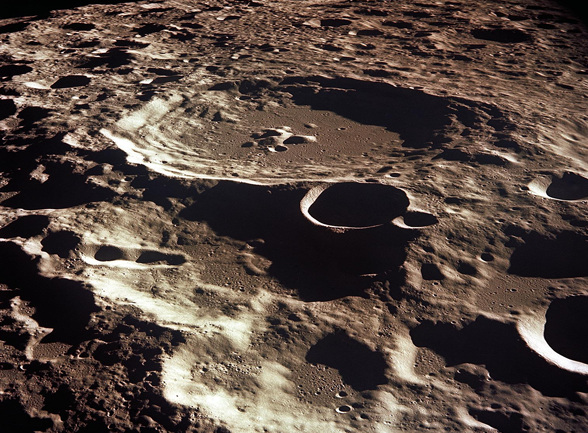
The lunar surface, literally full of holes from impact events. No dynamic weather patterns or active geology to hide most of the evidence, as on earth.
By now we get the point. By the strict definition of environment, the surroundings that affect our existence, it is more appropriate to name the solar system — our sun, its planets, asteroids, comets, and other matter — as our home. Too bad we don't have a better name for it as yet. Even this perception may not be broad enough, with a growing understanding of the influences of passing stars on planetary systems, but we'll keep it here for now.
In the nearly 50 years since Silent Spring, we've taken the earliest steps toward an inevitable human expansion into the solar system, with humans venturing into near earth space and robotic ships much further afield — our Voyager space probes in fact have reached the very edge of our solar system. We have also demonstrated an even greater ability to alter our surroundings; look at climate change, and the mass of man-made debris in earth orbit — it exceeds the flux of natural materials by many orders of magnitude. The implications of a world view of the solar system as our environment, as our home? Similar to what we learned in the 60s: Tread lightly whenever possible, avoiding damage and contamination. Work hard to understand the environment that supports and sustains us, and don't allow our exploitation to get ahead of that understanding.
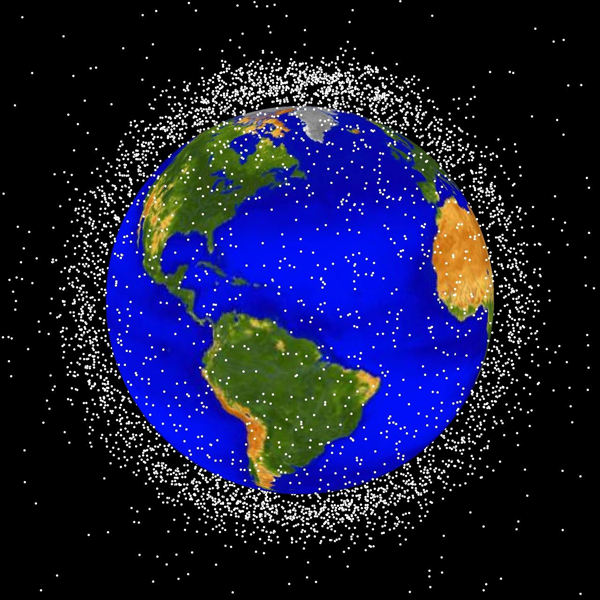
A graphic depiction of debris — unusable pieces of spacecraft in earth orbit. Only a tiny fraction of orbital matter is natural.
I'm NASA astronaut Michael Barratt for the University of Houston, where we're interested in the way inventive minds work
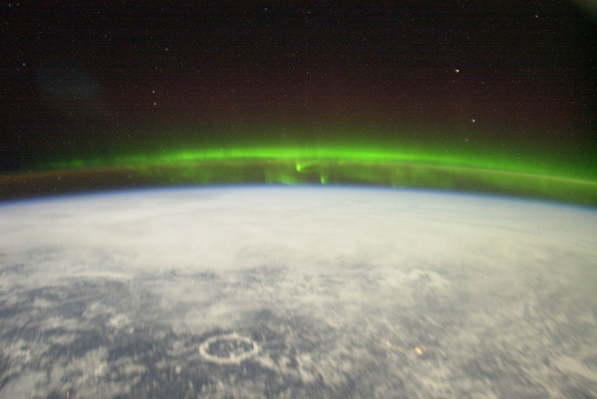
Earth image from the International Space Station. There is much to note here. The very thin ribbon of blue closely hugging the surface is the better part of our atmosphere. The glow of the aurora is made possible by earth's magnetic fields, trapping ionized particles from the solar wind and transferring energy to gravitationally bound oxygen. These same fields and atmosphere protect our surface from harmful radiation. The blackness of space is beyond, punctuated by stars. The ringed structure on the surface is the Manicouagan impact crater, formed some 200 million years ago by the impact of a presumed meteorite. About 45 miles in diameter, it's a favorite photography target of astronauts, and serves as a reminder of the dynamic nature of our solar system.
End Notes:
It was wonderful to grow up in the 60's, with the new sense of environmentalism taking hold and ecology becoming a household word. A related concept of the time was that of the earth as a spaceship, with sufficient but not limitless provisions. Spaceship Earth was the title of a book by Barbara Ward in 1966 that helped fuel a world view that we as a people need to shepherd our limited resources much more carefully. This view was certainly bolstered by the new imagery of our world made available to us by manned and robotic spacecraft. Fast forward 50 years; we know much more about our solar system and our home planet's place here. The solar system is now known to be larger and much more interesting than earlier imagined.
Life on earth coexists with the exchange of energy and matter between our world and other local bodies, although these processes have a sinister side as well. Our atmosphere helps to block both ionizing particles and ultraviolet radiation, implying that a change in atmospheric structure may compromise our protective shield. And of course impacts of large bodies — comets and meteorites — though rare events can drastically alter surface life for quite some time.
We as a species can now affect these factors both positively and negatively. From the climatic standpoint, we have seen how contributing to ozone loss may allow more harmful ultraviolet radiation to reach the surface. Dumping carbon into our atmosphere has allowed greenhouse gases to retain more of the solar energy we receive, contributing to a warming trend. From the standpoint of matter exchange, we have littered low earth orbit with debris, mostly useless fragments of spacecraft. This is a minuscule fraction when compared to the earth's mass, but running into a piece of this debris in a pressurized vehicle can certainly ruin your day. A bright spot is the notion that we may be able to identify earth impacting bodies years in advance of collision. Using one of several candidate technologies, we will hopefully be able to alter their course and avoid catastrophic effects on surface life.
One need not invoke future off-world colonization to realize that our concept of habitat cannot be limited to earth itself. Understanding this broader notion of environment is crucial to our long term survival, although on a scale of time and distance not so easily grasped as yet.
References:
Silent Spring. Rachel Carson. Houghton Mifflin Company New York 1962
Only One Earth; The Care and Maintenance of a Small Planet. Barbara Ward and Ren' Dubos. W.W. Norton and Company, New York 1972
Love SG, Brownlee DE. A direct measurement of the terrestrial mass accretion rate of cosmic dust. Science 1993; 262:550'553.
All photos courtesy NASA.